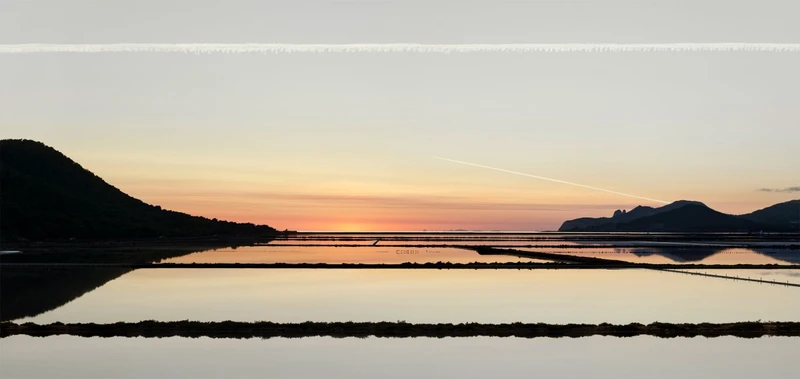Andreas Gursky
29 Apr-26 Jun 2022


White Cube Bermondsey is pleased to present an exhibition by Andreas Gursky featuring new and recent photographs. Produced over the past four years, these works reflect Gursky’s focus on the ‘essential commonality’ of contemporary life, and the forms and structures of global capitalism.
Gursky’s subjects – from multinational headquarters to fashion runways, a domestic interior to a political seminar – take on a scale akin to that of history painting. In so doing, Gursky gives spatial precedence to the pressing issues of our age, articulated through expansive scenes that reveal their pictorial complexity. In his new photographs, the artist elaborates upon the role of images in today’s society, addressing the paradoxical nature of the medium and its relationship to the real. As Gursky states: ‘Seeing and the imperative to find images leads me to my subjects, not the other way round.’
Several of the works in the exhibition revisit sites of earlier photographs, including the Hong Kong Shanghai Bank and the Rhine River. The resulting images appear to harness timescales and reflect accelerated political and ecological change. Those representing multinational headquarters include a series featuring Foster + Partners’ Hong Kong Shanghai Bank, which Gursky first shot in 1994. A landmark of the city’s skyline, Gursky’s pictures of the building suggest a financial and social world in flux; Hong Kong Shanghai Bank II (2020), for instance, with its cascade of colourful umbrellas visible on the façade, is an allusion to the 2014 ‘umbrella movement’ of anonymous protesters. Rhine III (2018), on the other hand, shows the same stretch of river as the iconic work Rhine II (1999) and uses almost identical dimensions and a similar, horizontal, banded composition. Resembling a muted colour field painting, Rhine III depicts a river now depleted, with bleached dry banks and low water levels following the severe summer drought of 2018. Eisläufer (2021) was also taken near to the Rhine but during winter, in a frozen meadow outside Düsseldorf. A busy, Breughel-esque scene recording people out walking and conversing, some wearing masks, in a landscape of lightly snow-covered fields, here the relationship of man to nature seems altered. The image, brimming with humanity, was taken during the period in which the pandemic forced many indoors, resulting in communal open spaces becoming central to urban life.
Another frozen expanse is the subject of Streif (2021), which depicts the famous World Cup ski run on the Hahnenkamm mountain near Kitzbühel, Austria. Viewed from a distance and with a slightly elevated perspective, the near vertical stretch is thinly covered and icy, while the surrounding trees are noticeably green and devoid of snow. The vertical composition recalls Gursky’s earlier investigations of sport infrastructures including the Formula 1 racetrack in Bahrain I (2005), while the screen in the picture’s bottom left hand corner – freeze-framing a crash on the course – behaves as a reminder of the commercial framework and manufactured thrill bound up with professional sport. Another image of nature bearing the imprint of humankind is Salinas (2021), a large-scale landscape photograph taken by Gursky in Ibiza. The extraction and trade of salt has a long history in Ibiza and here Gursky records nature as the site of industry, attesting to his long-standing interest in depicting reality as one built from many contradictions.
The question of pictorial verisimilitude underpins a new series of works that examine political structures, produced following several months observation of members of the German Bundestag. In Politik II (2020), 13 German politicians, with Angela Merkel at their centre, engage in conversation in an arrangement reminiscent of Renaissance depictions of the Last Supper, yet is here framed against the Pop Art painting Five Past Eleven (1989) by Ed Ruscha. Many of Gursky’s works feature paintings by other artists (including Constable and Pollock), an interest in part driven by a broader engagement with methods of presentation and display. This includes iconic works like 99 Cent (2001), his Prada series and most recently, the Viktor & Rolf pictures. The notion of global industries readily incorporates the fashion industry, a unique multibillion-consumer business where creativity and capital are inexorably entwined.
Bauhaus (2020) and Königsbergerstrasse, Diptych (2020) focus on aspects of modern living. In Bauhaus, Gursky captures the minimal industrial exterior of the Swiss-German DIY store beside a motorway, the only trace of human presence suggested by the stacked goods, glimpsed just behind two slit windows. Conversely, Königsbergerstrasse presents an intimate scene from everyday life showing a woman in an apartment playing a block-building game. Alluding to the confinement imposed by the recent pandemic, Gursky portrays a moment of tension, perhaps seconds before the elaborate wooden tower topples.
This body of work will be shown concurrently at Gagosian, New York, from 5 May – 18 June 2022.
Andreas Gursky was born in Leipzig, Germany, and lives and works in Düsseldorf, Germany. Collections include the Metropolitan Museum of Art, New York; Solomon R. Guggenheim Museum, New York; National Gallery of Art, Washington, DC; San Francisco Museum of Modern Art; Los Angeles County Museum of Art; The Broad, Los Angeles; Tate Modern, London; National Galleries of Art, Edinburgh, Scotland; Kunstsammlung Nordrhein-Westfalen, Düsseldorf, Germany; Museum Ludwig, Cologne, Germany; Kunstmuseum Bonn, Germany; Kunstmuseum Basel; and Kunsthaus Zürich.
Recent exhibitions include Louisiana Museum of Modern Art, Humlebæk, Denmark (2012); Stiftung Museum Kunstpalast, Düsseldorf, Germany (2012); National Art Center, Tokyo (2013); National Museum of Art, Osaka, Japan (2014); Landscapes, Parrish Art Museum, Water Mill, New York (2014); 56th Biennale di Venice (2015); Museum Frieder Burda, Baden-Baden, Germany (2015–16); Manifesta 11, Zürich (2016); Kunstsammlung Nordrhein-Westfalen, Düsseldorf, Germany (2016); Hayward Gallery, London (2018); Museum der bildenden Künste, Leipzig, Germany (2021); Museum Küppersmühle, Duisburg, Germany (2021–22); and Amorepacific Museum of Art, Seoul (2022).